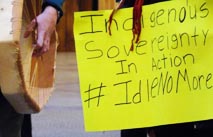
Expanding the Realm of the Possible in 2012
Who might have imagined, when 2012 was dawning, that the failures of capitalism – especially as seen through inequality which is crescendoing like a bottle rocket -would become standard dinner-table conversation in the US? Motley Occupiers around the country achieved that.



